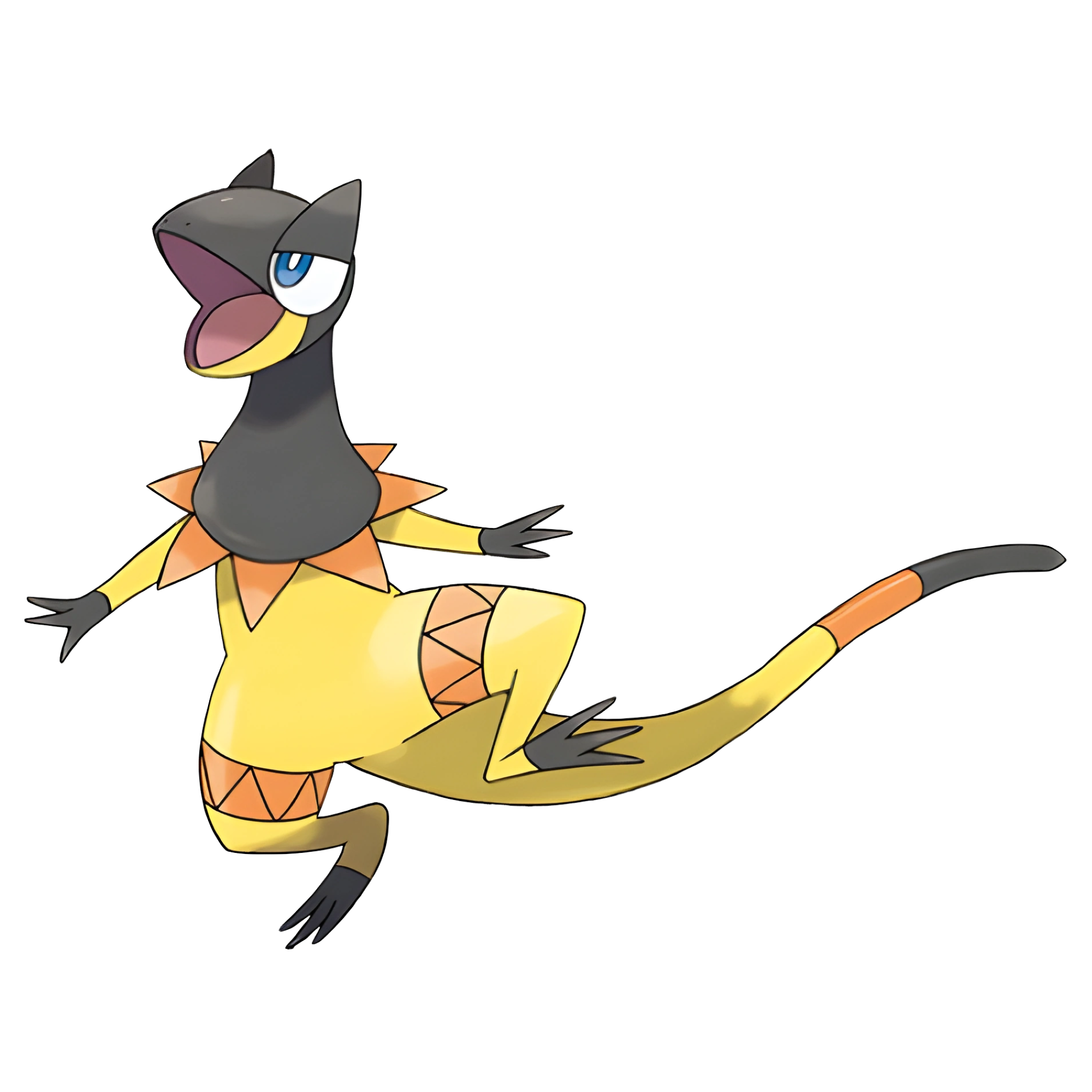Facts for Kids
Heliolisk is a lizard-like Pokémon known for its ability to generate electricity and is characterized by its frill and spiky tail.
Overview
Diet And Feeding
Role In Ecosystem
Conservation Status
Behavior And Ecology
Cultural Significance
Habitat And Distribution
Physical Characteristics
Reproduction And Lifespan

Inside this Article
Imagination
Helioptile
Gardens
Pokémon
Sprint
Planet
France
Year
Head
Did you know?
⚡ Heliolisk is an Electric/Normal-type Pokémon introduced in Generation VI.
🌞 Heliolisk can absorb sunlight to boost its own abilities during battle.
⚔️ It evolves from Heliotpile when exposed to a Sun Stone.
💡 Heliolisk has a unique ability called Solar Power which increases its Special Attack in strong sunlight.
⚡ Its Pokédex number is #695.
🌀 Heliolisk can learn moves like Thunderbolt and Hyper Voice.
🌊 This Pokémon is known for its fast speed and high Special Attack stats.
🦠 Heliolisk’s appearance is inspired by a frilled lizard.
☀️ It can generate electricity through its frill when it's sunny outside.
🌍 Heliolisk's habitat is often in sunny regions where it can bask in the sunlight.
Introduction
Heliolisk is known as the "Gen Heliolisk Pokémon." This electric and ground-type Pokémon resembles a lizard with a crest on its head. It can evolve from Helioptile when exposed to a Sun Stone! ☀
️ Did you know that its name is a mix of "helios," meaning sun in Greek, and "lisk," which is a play on "lizard"? Heliolisk is known for its vibrant colors and special abilities! ⚡
️
Diet And Feeding
Heliolisk has a special way of hunting: it waits patiently until an insect comes close, then it strikes fast! It plays an important role in controlling insect populations in its habitat. Yum! 🍽
️
Role In Ecosystem
️ As a predator, it helps keep insect populations in balance. This is important because too many insects can damage plants. 🌿
By eating insects, Heliolisk helps gardens and fields thrive! Also, it is part of the food web; larger Pokémon may hunt Heliolisk, which keeps nature balanced. So, you see, Heliolisk is crucial for a healthy ecosystem, just like a superhero in its habitat! 🦸
♂️
Conservation Status
In the Pokémon world, it thrives in sunny environments and can often be found in shady spots during the hottest part of the day. However, like any species, it's crucial to protect its habitat to ensure it stays safe and happy. 🌞
By taking care of the environment and keeping our skies clean, we help Heliolisk and other Pokémon flourish! Let's be kind to our planet! 🌎
Behavior And Ecology
When it gets enough sunlight, it can unleash powerful electric attacks! ⚡
️ Heliolisk uses its frill like a solar panel to soak up sunlight, which helps recharge its energy. This Pokémon is known to sprint quickly and climb trees to escape danger. Heliolisk often communicates with other Pokémon using different sounds and body movements. They like to live in groups, which helps them protect each other from predators! 🦜
Cultural Significance
Some Pokémon trainers love using it in battles because of its electric moves! ⚔
️ Heliolisk has appeared in various Pokémon games, anime episodes, and toys! Kids love to catch Heliolisk in Pokémon games, making it a favorite among fans! 🎮
Its design and abilities inspire creativity and imagination in young trainers all over the world! 🌍
Habitat And Distribution
️ In the Pokémon world, it can be seen in places like the Kalos region, which is inspired by France. There, you might find Heliolisk basking under the sun or hiding among rocks. 🌍
Heliolisk loves warm environments, where it can soak up all the sunlight it needs. On sunny days, you'll often see it running around playing with other Pokémon. If you're lucky enough to explore Kalos, keep an eye out for this electrifying creature! ⚡
️
Physical Characteristics
It has unique markings on its sides, resembling a zigzag pattern. One of its most striking features is its frill, which resembles a solar panel; this helps absorb sunlight! ☀
️ Heliolisk can grow up to 3 feet long (about 0.9 meters) and weighs around 47 pounds (21.5 kg). Its big eyes help it see well during the day, while its long tail provides balance as it runs or climbs! Heliolisk is perfect for sunbathing! 🌞
Reproduction And Lifespan
When Helioptile evolves into Heliolisk, it usually happens during the sunny time of the year! After mating, a female Heliolisk lays around 3-5 eggs in a warm place. 🌞
The eggs hatch in about 2-4 weeks, and the baby Helioptile are super cute! Heliolisk can live for many years, around 25-30 years in the wild! 🎉
Taking care of young ones is important, as they learn how to soak up the sun and catch food!

